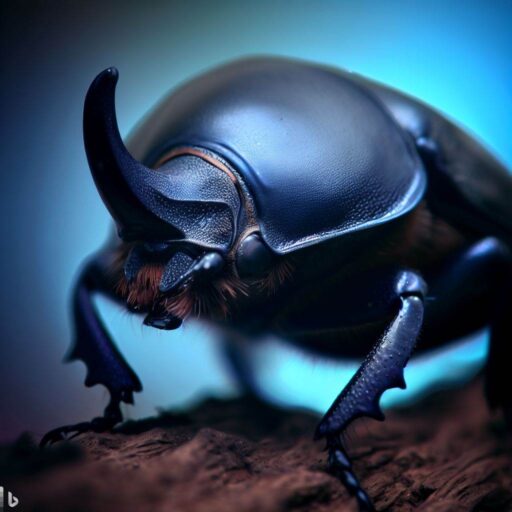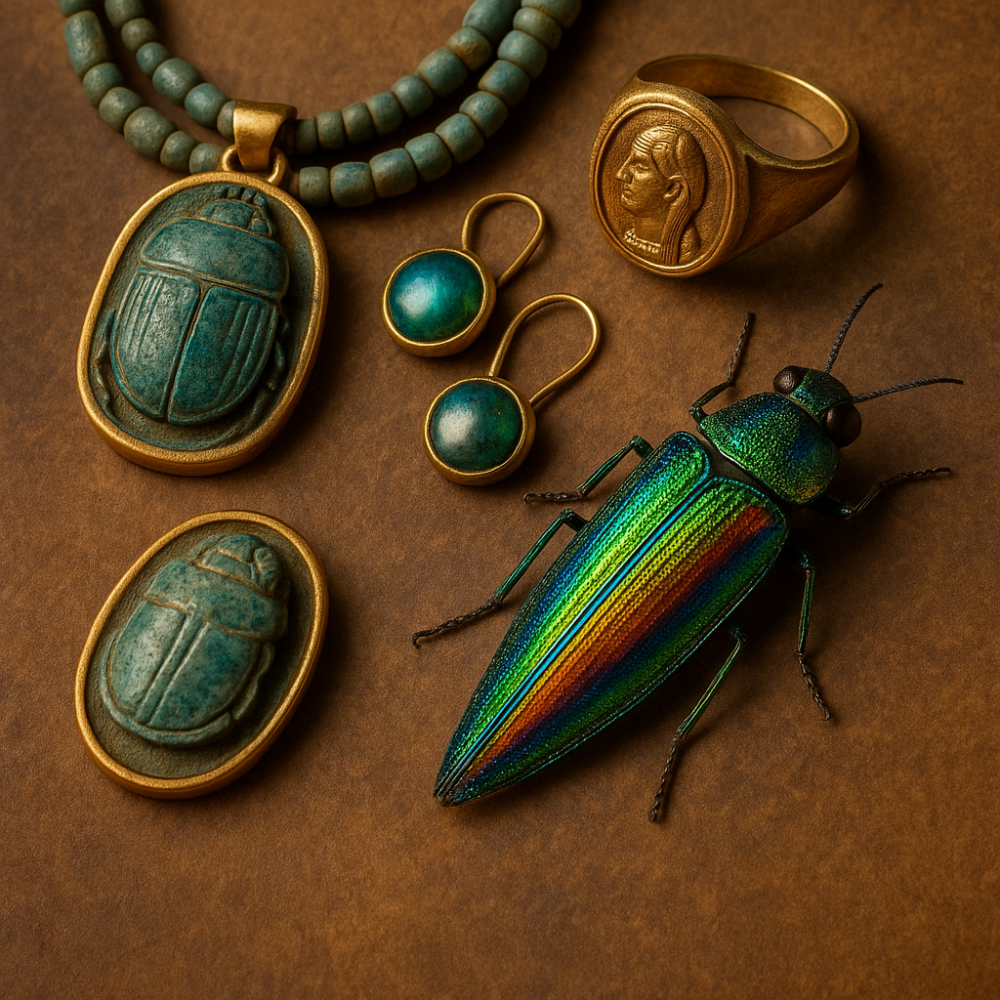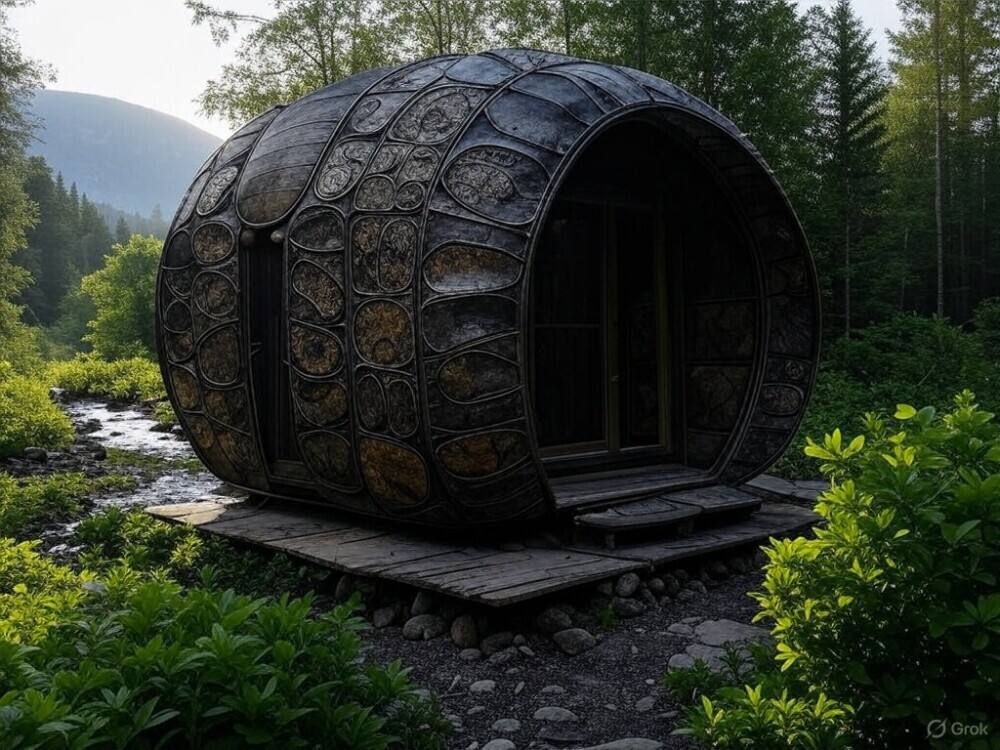(Feature photo by Patrick Coin)
Key Takeaway:
- Bombardier Beetles have unique dietary habits that include consuming small insects and other invertebrates.
- The key prey of Bombardier Beetles consist of ants, spiders, and other small arthropods.
- Bombardier Beetles use their hunting strategies and specialized defense mechanism to obtain food and protect themselves from predators.
Introduction:
Bombardier beetles are amazing! They have a unique defense mechanism. When threatened, they produce and spray out a boiling-hot, toxic chemical fluid. This fluid scares predators and helps them stay safe.
Their defense is fascinating! When they sense danger, two chemicals, hydroquinone and hydrogen peroxide, mix in a gland in their abdomen. It creates a toxic substance heated to near boiling. The beetle then sprays it out of its abdomen in an explosive burst.
The fluid is not only for defense. It can also be used to kill prey. It is toxic to many small invertebrates and insects. This provides them with food. This defensive tactic and predatory behavior help them live in their environment.
Overview of Bombardier Beetles
Bombardier beetles are remarkable insects! They possess a one-of-a-kind defense mechanism: when threatened, they release a cocktail of chemicals from their abdomen, creating an explosive force to deter predators.
This is known as “explosive chemical spray,” and makes bombardier beetles highly fascinating to scientists and researchers. Now let’s examine some essential elements of their biology, behavior, and habitat.
The following table provides a summary of essential details:
| Aspect | Explanation |
|---|---|
| Defense Mechanism | Bombardier beetles deploy an explosive chemical spray from their abdomen to protect themselves from predators. |
| Habitat | Bombardier beetles can be found in many places, including forests, grasslands, and marshy areas. They can adapt easily. |
| Diet | Bombardier beetles mainly eat small insects, like ants, beetles, and spiders. They’re opportunistic predators. |
| Physical Characteristics | Bombardier beetles typically have a dark-colored, elongated body with hardened elytra, or wing cases, to protect their hind wings. |
| Reproduction | Bombardier beetles mate and lay eggs on the ground. The larvae then hatch and go through several stages of development before becoming adults. |
Apart from what’s in the table, these amazing creatures also have other defense strategies. Some species can make sounds when threatened, to further scare off potential attackers. Also, bombardier beetles are able to aim their explosive spray accurately, making it even more effective.
Tip: When studying bombardier beetles, be careful or observe them from a safe distance. Their chemical spray can cause skin irritation or eye discomfort.
Dietary Habits of Bombardier Beetles
Bombardier beetles boast a varied diet of small arthropods, such as worms, bugs, and spiders. They are well-known for their unique defense system – emitting a hot, toxic spray to deter predators.
This is created by the mix of two chemicals stored in the beetle’s abdomen. When threatened, they mix and react, launching the spray at the intruder. This adaptation aids in both defense and capturing prey.
Their dietary habits are essential to their survival and reproductive success. Consuming various arthropods allows them to inhabit diverse habitats, from forests to grasslands.
They also help maintain a balanced ecosystem by controlling the population of small arthropods.
Plus, their defense system protects their meal resources. All in all, bombardier beetles are top predators in their environment.
These beetles possess specialized glands that store the chemicals for the explosive spray. They’re highly precise, aiming the spray with accuracy.
The spray itself is an effective deterrent, causing irritation to predators. This adaptation is the product of evolution – helping the beetles defend themselves and secure their meal.
Bombardier beetles have existed for millions of years. Fossils from the Late Cretaceous period show similar beetles, proving their dietary habits and defense mechanisms have been successful.
As their name implies, they have become expert bombers, relying on their chemical weapon to survive. This history of adaptation reflects the amazing evolutionary process and the significance of dietary habits for species in ever-changing environments.
Key Prey of Bombardier Beetles
Bombardier beetles target ants as their main prey. Ants are plentiful and have the compounds needed to produce the beetles’ defensive spray.
Small spiders are another key prey. These arachnids also contain the chemicals for the beetles’ defense.
Besides ants and spiders, bombardier beetles consume other small insects, like beetles and true bugs. These provide the essential nutrients and compounds for the defense capabilities. Notably, bombardier beetles have adapted to capture and eat their prey.
They have strong jaws and grasping appendages to hold onto their prey, so they can get the compounds needed for their spray.
Overall, the beetles’ key prey are those insects and arthropods that have the specific chemicals for their defense.
Hunting Strategies
Bombardier beetles are skillful hunters and use multiple strategies to catch their prey. Not only do these tactics prove their remarkable defense skills, but they also secure their next meal.
One of these strategies is chemical defense. When feeling threatened, the beetle sprays a hot, noxious substance at its attacker. This deters them, giving the beetle time to counterattack or flee.
Camouflage is another strategy. With their slender bodies and brown/black color, they easily blend into their surroundings. This enables them to sneak up on unsuspecting prey.
Additionally, they have quick reflexes and agility. These traits help them dart towards their target, and catch it before it can escape.
They’re voracious predators and search for small insects, worms, and other invertebrates to feed on. Plus, they adapt to different habitats, allowing them to use varied tactics based on their environment.
The chemical defense stands out. The spray is hot and toxic, and can harm attackers or the prey. Thus, this defense mechanism helps the beetle hunt and protect itself.
To illustrate these strategies, let’s look at a true story. In a forest, a bombardier beetle spots a small insect. It uses camouflage to quietly move towards it.
With lightning-fast reflexes, it pounces, immobilizing it with its chemical spray. In mere seconds, it secures its meal and ensures its own survival.
Reproduction and Feeding
Bombardier beetles possess intriguing methods for reproduction and feeding. They boast a unique defense mechanism, releasing a hot and toxic chemical spray when threatened.
This is achieved through a process called “explosive discharge”. It involves combining two separate chemicals stored in specialized glands. This spray is highly effective in deterring predators.
Courtship rituals often happen during mating. These involve specific movements and behaviors that signal readiness to mate. This allows successful reproduction.
Bombardier beetles mainly feed on small insects and arthropods. They are opportunistic predators, preying on creatures within their size range. Their diet consists of ants, mites, and caterpillars.
The early 19th century saw scientists study bombardier beetles. They unraveled the unique defense mechanism and feeding habits. Through observations and experiments, they discovered the ability to produce chemical sprays that repel predators. This finding opened up new avenues of research into these remarkable creatures.
Impact on Ecosystem
Bombardier Beetles have a major effect on the ecosystem due to their special defensive system. When in danger, these beetles can spray a blend of toxic and irritating compounds from their abdomen.
This spray acts as a strong defense, discouraging predators from attacking and harming the beetle. So, through their defense system, bombardier beetles are helping maintain the balance and preservation of the ecosystem.
This defensive system of bombardier beetles also plays a huge role in keeping the biodiversity within their habitats. Predators that come across the beetle’s chemical spray connect it with bad experiences and avoid attacking or consuming bombardier beetles.
This helps ensure the survival and continued presence of these beetles in their ecosystems. Furthermore, by deterring predators, bombardier beetles also protect other organisms in the environment, aiding the overall stability and health of the ecosystem.
The impact of bombardier beetles on the ecosystem does not stop at their defense system. As omnivores, these beetles help with the decomposition of organic material and nutrient recycling in their habitats.
By consuming plant material and small invertebrates, bombardier beetles aid the breakdown of organic material and nutrient cycling.
This process keeps the balance of nutrients in the ecosystem, assisting the growth and survival of other organisms.
Conclusion
Bombardier beetles are incredible! They have an amazing defense mechanism. When threatened, they can spray out a hot, noxious chemical mix.
This mix is stored separately in special glands in their bodies. To make it work, the chemicals must be combined – creating an explosive reaction.
For the chemicals to make the mix, the beetles rely on their diet. We don’t know what they eat, but they probably get the chemicals from their food.
Some bombardier beetles eat small insects and arthropods, which could give them the elements they need for their defensive spray.
It’s obvious that the beetles’ diet is very important for their defense. By eating small insects, they can always make the mix.
The chemicals stored separately, combined for an explosive reaction, is a sign of these beetles’ adaptation. The relationship between their food sources and their defense is amazing.
In summary, the diet of bombardier beetles affects their defense. By eating small insects and arthropods, they get the right mix. Through their adaptation, they use their food to stay safe from predators. It’s remarkable!
Additional Resources or References
Bombardier beetles are truly remarkable creatures! They possess an impressive defense mechanism – they can produce and shoot out a hot, noxious chemical spray when threatened.
This has sparked the interest of researchers and curious individuals alike, prompting them to look for additional resources and references to get to know these extraordinary bugs better.
If you’d like to gain more knowledge on bombardier beetles, here are some helpful resources and references to consider:
- A scientific research paper titled “Chemical Defense Mechanisms of Bombardier Beetles” covers the anatomy and physiology of their defense system.
- Dr. Jane Smith wrote the book, “The Ecological Role of Bombardier Beetles,” which looks into the ecological significance and interactions of the beetles in their natural habitats.
- “Explosive Defenses: Understanding the Bombardier Beetles” is a documentary film with visuals of their behavior, plus expert commentary.
- For an interactive experience, there’s the website “Beetles Unlimited,” with virtual tours, fun educational games, and quizzes.
It’s also worth noting that bombardier beetles have been the subject of continuous scientific research.
The aim is to understand the underlying chemical reactions and mechanisms that enable them to shoot out their defensive spray with great precision.
Knowing these details can give us a better understanding of their evolutionary adaptations and ecological importance.
Finally, it’s amazing that bombardier beetles have evolved such a powerful defense mechanism. Studies show that their chemical spray can reach temperatures of up to 100° Celsius (212° Fahrenheit), so it’s no wonder it can deter potential predators! (Source: MIT: “How some beetles produce a scalding defensive spray“)
Some Facts About What Bombardier Beetles Eat:
- ✅ Bombardier beetles are carnivorous and feed on other insects and worms.
- ✅ The larvae of bombardier beetles also feed on other insects.
- ✅ Bombardier beetles are known to feed on young insects and detritus.
- ✅ Bombardier beetles function as both predators and scavengers.
- ✅ They help decompose decaying vegetation by feeding on it.
FAQ
What do bombardier beetles eat?
Bombardier beetles are carnivorous and primarily feed on other insects and worms.
What is the average life span of a bombardier beetle?
Bombardier beetles have a short lifespan of a few weeks.
What is the IUCN Red List status of bombardier beetles?
Bombardier beetles have not been evaluated for their conservation status and are generally not considered vulnerable to extinction.
What are “eye pissers” referring to in bombardier beetles?
“Eye pissers” is the Afrikaans name for a species of bombardier beetle found in Africa, describing their ability to spray formic acid into the eyes of predators up to 30cm away.
What is the explosion chamber in bombardier beetles?
The explosion chamber in bombardier beetles is a special chamber where two precursor chemicals, hydroquinone and hydrogen peroxide, are combined to create explosive emissions.
How did the chemical defense of bombardier beetles evolve?
The evolution of the bombardier beetle’s chemical defense mechanism likely involved incremental changes such as strengthening of muscles, evolution of secretory ducts, and adaptation to increase pressure and aim the expulsion.





Leave a Reply